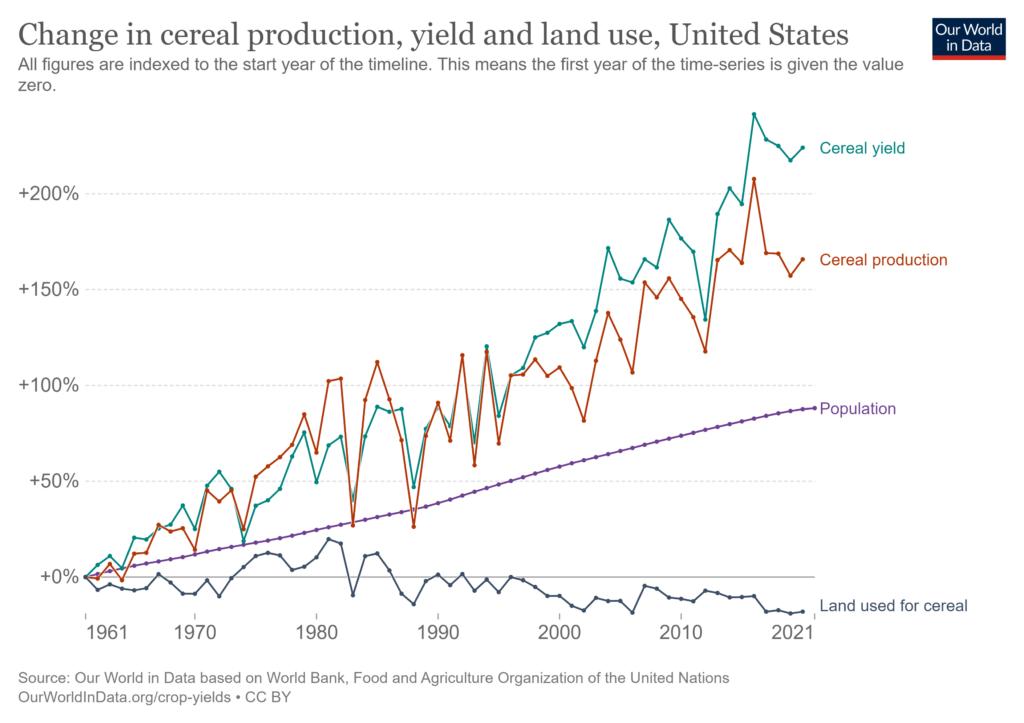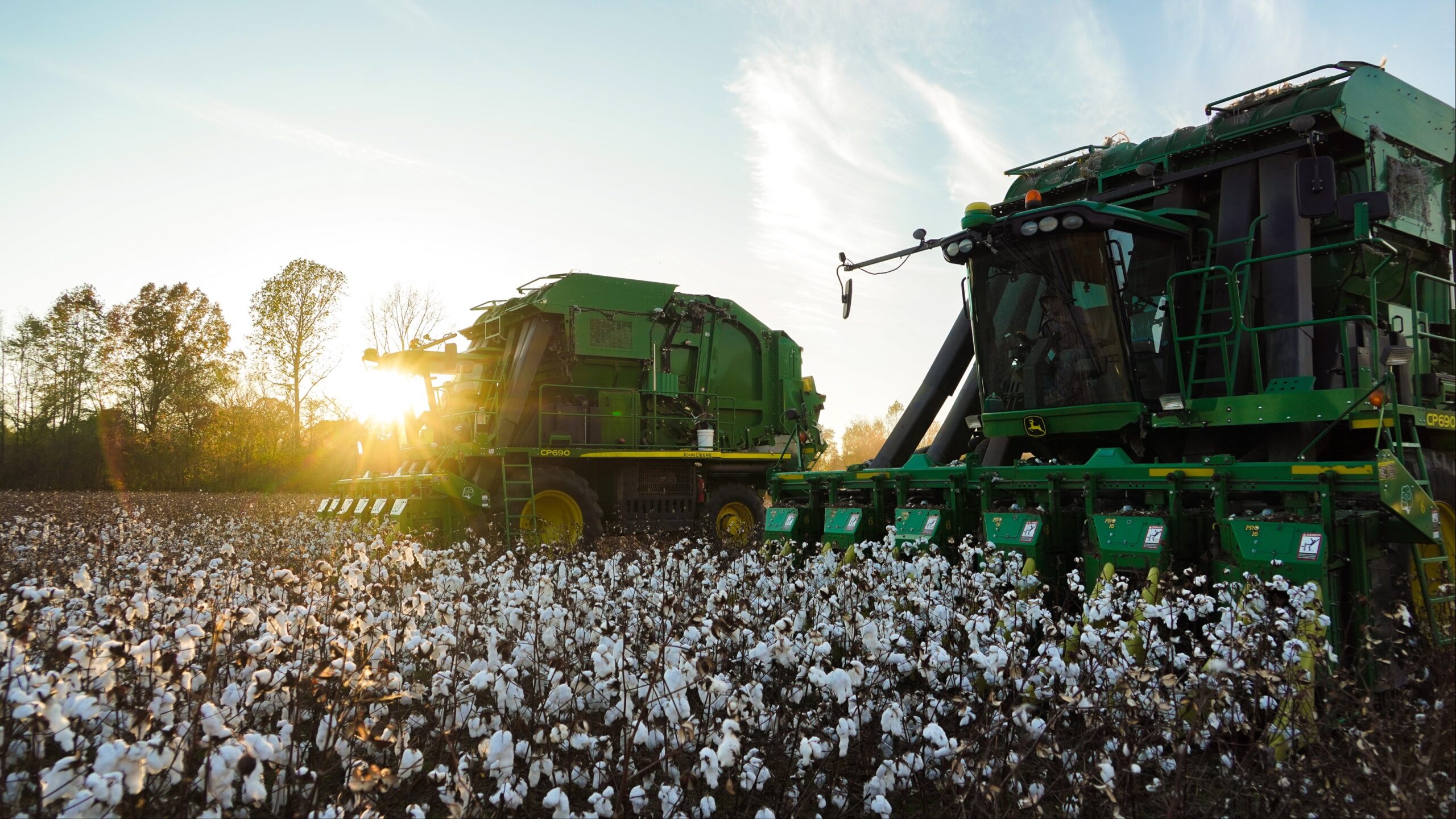The first time I understood the incredible value of the US agriculture supply chain, I was in an unexpected place. I was riding in the back of a Humvee bumping along a dirt road outside of Srebrenica in Bosnia in 1999. Riding along with me was one of our translators, a 30-something man who spoke excellent English. Over the rumble of the diesel engine and squeak of the chassis, I asked him about his background. He was an engineer by training. When the war broke out, his job disappeared. He’d been scrambling ever since just to provide for his family. When the US arrived in 1996, he’d begun working as a translator as it was the best-paying job around (I remember being shocked at how little it was but can’t remember the amount). At one point, I asked about family. He explained that he had a sister and brother-in-law that had emigrated to the United States. She was an accountant but had started like so many immigrants restocking shelves at night at a grocery store outside of Spokane, Washington as she didn’t speak much English. Her husband worked on the loading docks at a nearby warehouse. Within a year, she’d learned the language and had found work as an accountant at a small firm in the area. The family had bought a used car and got a small apartment. I said something like, “Life can be tough as a new immigrant.”
He stopped me. “No” he said. “You don’t understand. America is the greatest country in the world. You don’t understand how incredible it is. It’s the simple stuff, like being able to go to the grocery store and be able to buy whatever you want. Not just because it is there, but because you can afford it. The ability to live your life knowing you can feed your family is incredible. America is amazing.” He was right. I’d never really had any other expectation than I’d be able to get nearly whatever food I wanted, whenever I wanted.
I have never taken my trip to the grocery store for granted since.
I thought of that story this week as we celebrate the first day of spring and National Ag Day tomorrow. In large part because of our industry, America is the envy of much of the world as it relates to both food independence and energy independence. Because of America’s farmers, our ag supply chain, and the ingenuity of so many people in the agriculture and agriscience industry, the vast majority of Americans have the luxury of essentially taking bountiful and affordable food for granted.
So in celebration of National Ag Day, I thought I’d present a few amazing facts about our great industry.
- America is food independent. In other words, America can more than support itself with the food it grows. Among major industrialized nations, only Canada, Australia, the U.S., France, Russia, and India can say that.
- Food affordability. The US spends the least amount of its income on food on earth at 7.1% in 2020, lower than any other country on earth. While that small percentage is a combination of affordable food and high incomes, the bottom line is that a strong agricultural sector contributes to people being able to spend proportionally more of their money on things other than food necessities.
- Ag is important to the economy. While the 2.6 million on-farm jobs are just 1.5% of total jobs, ag-related jobs make up over 10% of total US employment (source USDA). When you bring in the entire food value chain (restaurants, food services, etc., agriculture touches over $1 trillion a year.).
- America is the world’s largest exporter of food. Although China is the largest agricultural producer of food overall, the US is the largest exporter. We are the largest corn producer and among the largest for soybeans, beef, tree nuts, pork, dairy, wheat, and cotton. In 2021, we exported a record $177 Billion, $22.5 Billion above the previous record in 2014. (Source: farm policy news).
- America’s farms are efficient. American agriculture is some of the most efficient in the world, particularly with row crop agriculture. That means we’re able to get more bushels per acre of land. Between 2017 and 2020, US farmers averaged 172 bushels of corn per acre. That compares to just 120 for Europe, 101 for China, 95 for Russia and Ukraine, 93 for South America and 48 for the rest of the world. (Source Farmdoc Daily).
- America’s farms are environmentally friendly. Fertilizer runoff can be an issue for lakes, rivers and oceans near river outlets. Thankfully, America’s farmers are some of the most efficient users of fertilizer on the planet, as measured by nitrogen use efficiency (NUE). An NUE of 40% means that only 40% of nitrogen inputs are converted to nitrogen for crops. The US’s nitrogen use efficiency was 72% in 2014. China’s is just 32%. India is 33% and Brazil is 58%. Source: Ourworlddata.org
- America is the global leader in genetically modified crops. Far from the boogie-man the media portrays GMOs to be, they are key contributors to feeding a growing planet and saving countless lives. In short, scientists are using gene editing to develop crop varieties that are better in almost every way than their forbearers without having to wait thousands of years for people to figure it out naturally (what humans have been doing since the birth of agriculture). Indeed, your grandfather’s variety of seeds was likely a mutation brought about by seed scientists shooting seeds with massive doses of radiation and waiting to see what beneficial mutations might result. GMO’s can be more disease-resistant, insect-resistant, drought-resistant, and herbicide-tolerant.
GMO can also increase the nutritional profile. For example, Golden Rice adds beta-carotene, which converts to vitamin A in the body. Vitamin A is necessary for better skin, improved immune systems and vision. Golden rice has the potential to prevent blindness in hundreds of thousands of people who lack access to vitamin A. Scientists have produced soybeans with less saturated fat and little-to-no transfats. Simplot has developed a potato that is resistant to blight and potato virus Y. Want to avoid the next potato famine, anyone?
Overall, GMOs offer improved health, improved nutrition, and lower cost food. Don’t believe me? Ask the scientists. In 2016, 107 Nobel Price Winning Scientists penned a letter to the GreenPeace, the United Nations, and governments around the world asking them to stop to cease and desist is campaign against Golden Rice and GMOs generally. “Scientific and regulatory agencies around the world have repeatedly and consistently found crops and foods improved through biotechnology to be as safe as, if not safer than those derived from any other method of production. There has never been a single confirmed case of a negative health outcome for humans or animals from their consumption. Their environmental impacts have been shown repeatedly to be less damaging to the environment, and a boon to global biodiversity.” They ended by asking, “How many poor people in the world must die before we consider this [fight against GMOs] a ‘crime against humanity?’”

- Food efficiency has outpaced population growth, keeping costs down and allowing alternative uses. The US’s population has increased 184% since 1960 but it’s productivity for corn has gone up by 314%. That has allowed the US to fuel the ethanol business and exports.
- Agriculture contributes to America’s energy independence. Since 2019, the US has been a net exporter of total energy. (Source: EIA.gov). Ethanol plays a role in that. US is the largest producer of ethanol in the world with over 15 billion gallons produced annually. We also exported $2.8 billion in 2021.
- Some fun facts about Ethanol. It is a renewable resource. It is also lower in carbon than gasoline and has more oxygen.
- The extra oxygen in ethanol helps modern engines oxygenate the fuel, which improves combustion efficiency and reduces air emissions. That is why NASCAR uses it for their high-compression racing engines. Critically, ethanol has replaced MTBE to do this. MTBE is extremely toxic and can pollute groundwater if spilled. Ethanol is alcohol and evaporates or simply dissolves in water.
We have certainly been blessed with an abundance of natural resources. But we’ve had the ability to take advantage of that abundance and maximize its potential. Over the past 200 years, we’ve developed an agriculture supply chain that is the envy of the world, from our use of the mighty Mississippi and its branches for the import of fertilizer and the export of crops. From a rail system that prioritizes freight to take crops to markets for sale and ports for export. Our government has played a largely positive role, in investing in the infrastructure, supporting agriculture development through our state universities and federal research centers, and ensuring a free market that has rewarded risk-takers. But among the many people who deserve credit are all of you, who work hard every day to keep our farmers supplied, not just with the necessary crop inputs but with the knowledge of how to produce the best crops.
Our job is not done. More needs to be done. While farmers are outstanding stewards of their lands, we can do a better job of protecting the larger world from things that leave the field. We could be better at managing fertilizer runoff, preserving precious fresh water, and being more efficient with our use of critical chemicals. To those ends, I am incredibly proud that we’re playing such a central role in doing that, through our innovative products we help bring to market, our applicators who help properly place fertilizer and crop protection products, to our agronomy and ag tech teams who help explain the “how to” growers. Through our extensive soil sampling program, we are helping our growers be more efficient with fertilizer and seed. We are helping our growers sequester more carbon through tillage management, nitrogen management, and by using cover crops. By helping growers with ground-water moisture sensors, we are helping growers be more efficient with water. And by using outstanding Winfield’s outstanding family of adjuvants, we’re helping farmers be more efficient with their chemicals. All of it is good for their bottom line, good for their communities, and good for our planet.
So as we celebrate National Ag Day, I hope everyone takes a moment to be grateful for our agriculture industry. It is not perfect and there is much work to be done, but it is pretty dang good. Hundreds of thousands of people every day work incredibly hard to make sure that when we go to the grocery store, we can not only find the food we want, but we can afford it.
With thanks and appreciation for our many blessings.
Happy National Ag Day.
Onward!
Jeff





